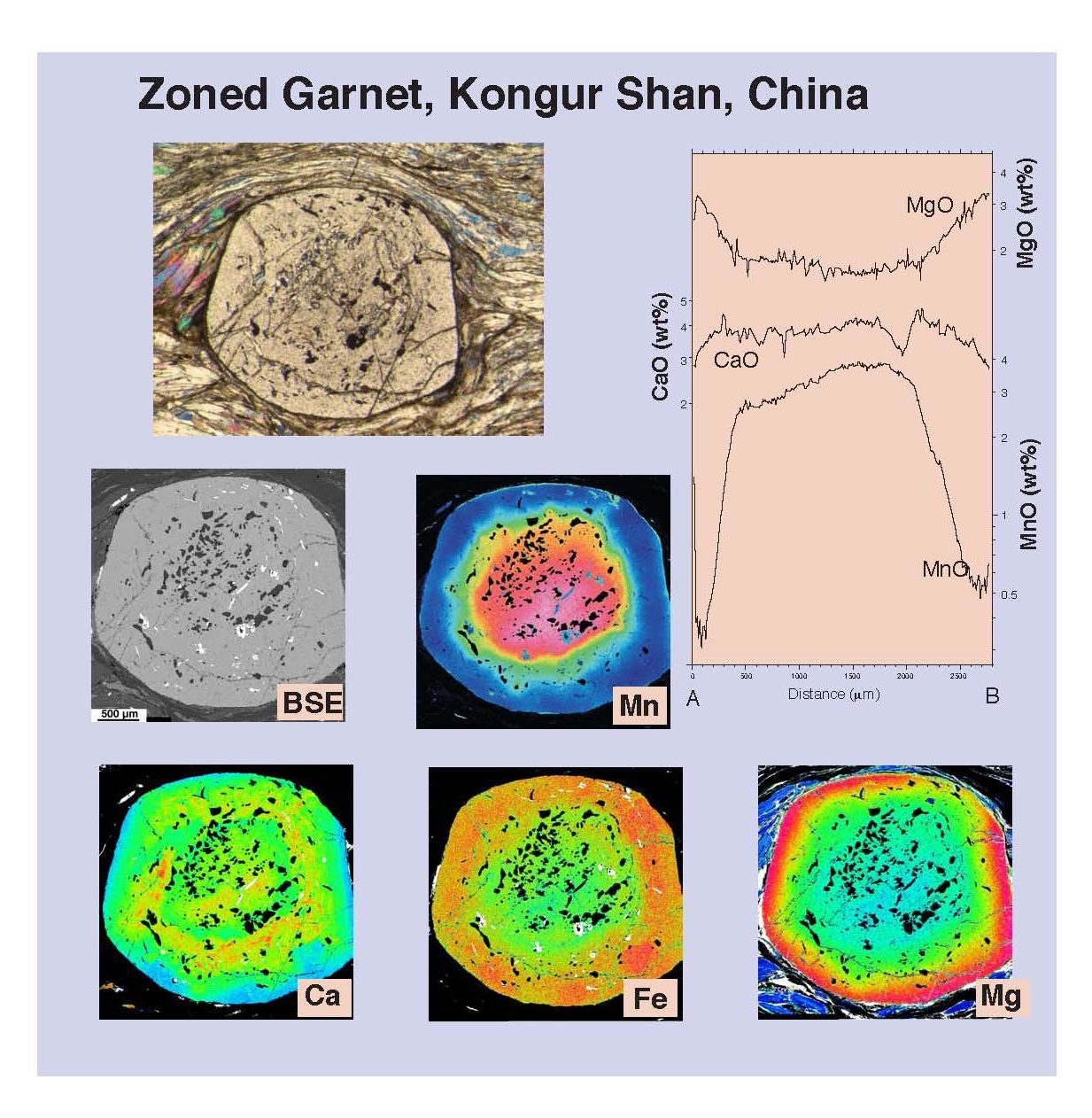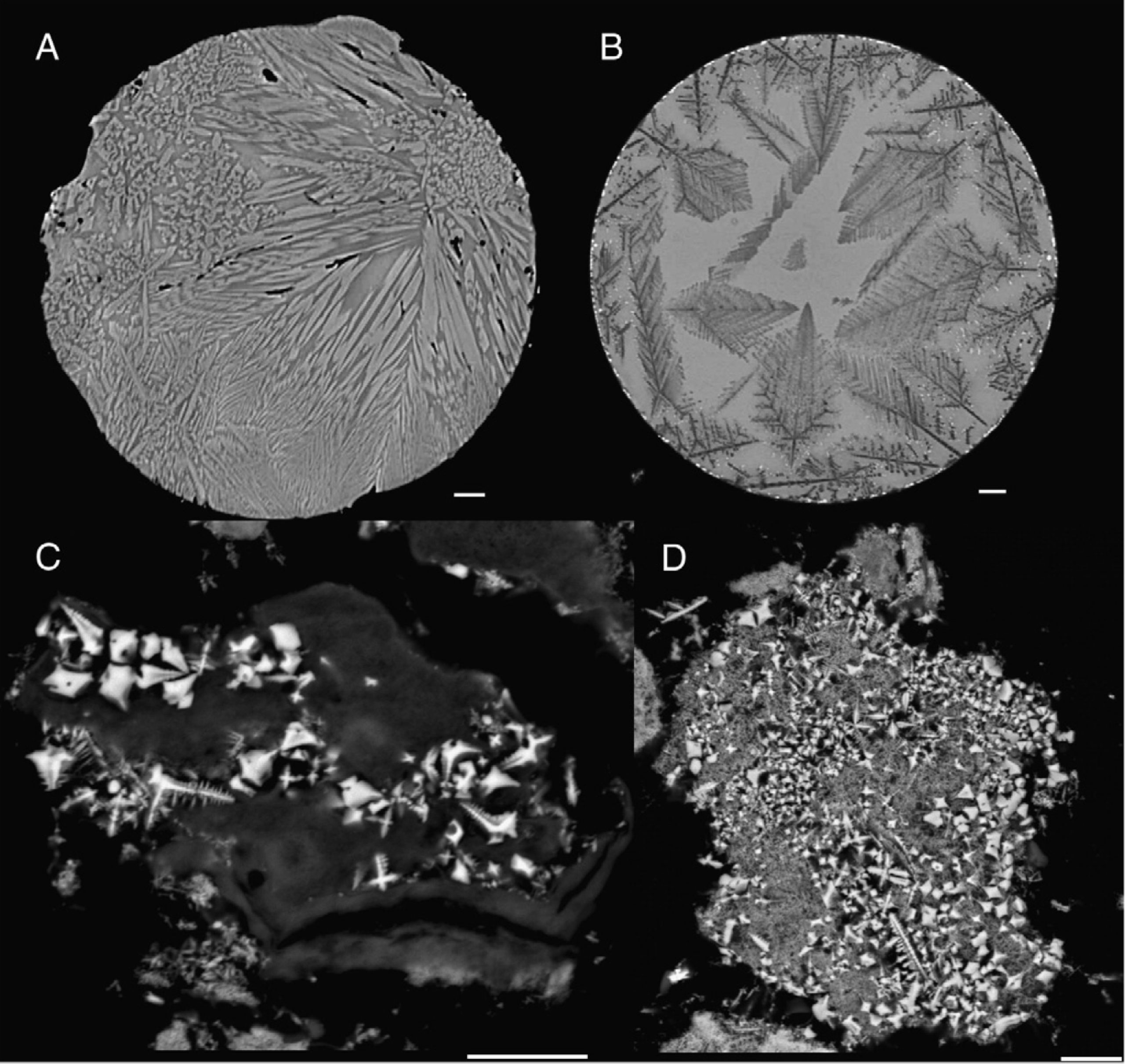Geology
Elemental Maps and Quantitative Analysis of Minerals

Elemental X-ray maps of a metamorphic garnet from Kongur Shan in China. Also included are a photomicrograph image in transmitted light (top-left) and a backscattered electron (BSE) image (center-left). The maps resulted from 2000 x 2000 analyzed spots with a 1 µm interval. Maps were created during four days of work. Quantitative analyses of selected oxides are showed on the center-right image. Images are courtesy of Frank Kyte.
Asteroid Impact Ejecta

BSE images of impact spherules (scale bars = 10 μm). A) Well-preserved Ca-rich pyroxene in a glass matrix with traces of Cr-rich spinel. B) Poorly preserved pyroxene that has been partially dissolved by seawater etching, leaving feathery voids. Bright grains near rim are small spinels (<1 μm). C,D) Strongly altered and flattened spherules with material missing from their rims. Composed mainly of Fe-rich oxides; silicates have been altered to clays. C) Well-developed spinels with skeletal textures in clay matrix. D) Abundant spinel crystals. Images are courtesy of Frank Kyte.
Modified from Kyte, F.T., Shukolyukov, A., Hildebrand, A.R., Lugmair, G.W., and Hanova, J., 2014. Chromium-isotopes in Late Eocene impact spherules indicate a likely asteroid belt provenance: Earth and Planetary Science Letters 302, 279-286.
https://www.sciencedirect.com/science/article/pii/S0012821X10007582
CAI from Meteorite
Calcium-rich, Aluminum-rich Inclusions (CAIs) are the first solids formed in our Solar System and preserve information about the earliest events in the solar nebula. Shown here is a small CAI that is composed of corundum (Al2O3) and hibonite (Ca(Al,Ti,Mg)12O19), which are high-temperature minerals that form out of solar composition gas >1600 °C. The X-ray elemental maps show the minerals more clearly and the Ti map shows that the hibonite has some Ti that distributed unevenly. This CAI was found in a pristine ordinary chondrite meteorite, NWA 8576, which was loaned from the UCLA meteorite collection by Alan Rubin. Images are courtesy of Emilie Dunham.
This project is funded by the 51 Pegasi b Fellowship:
https://www.hsfoundation.org/fellow/emilie-dunham-ph-d-candidate/


